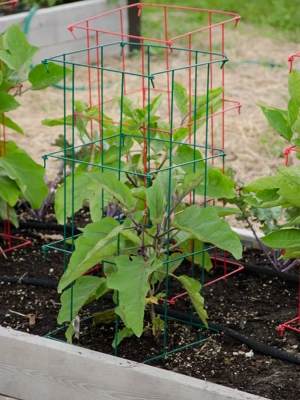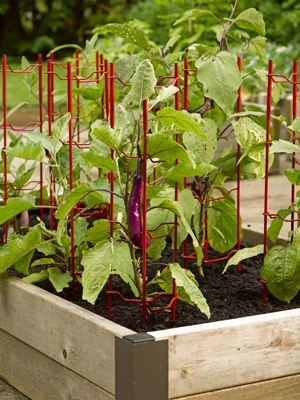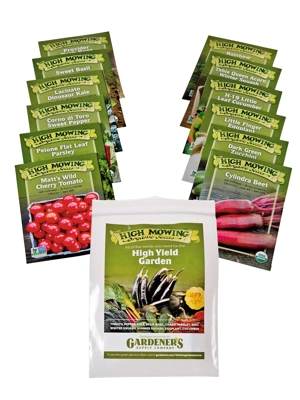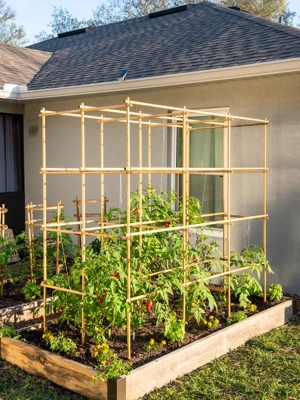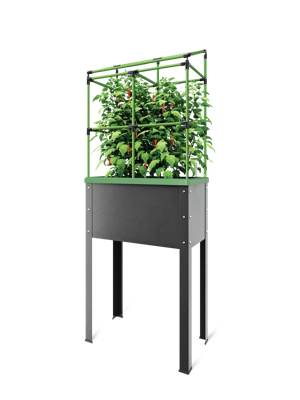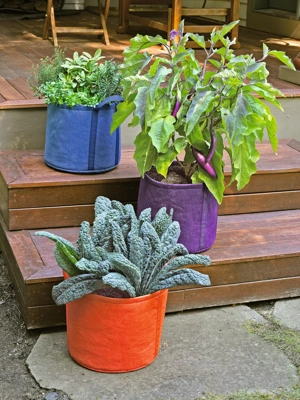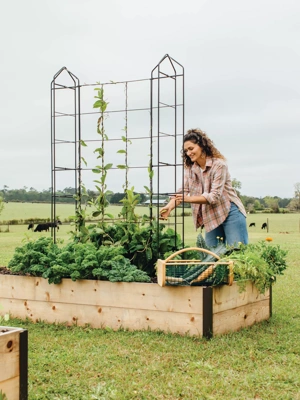Eggplant

Eggplants are exotic-looking vegetables. They range in color from glossy purple to pure white, and in size from chicken eggs to dinosaur eggs. Some are long and thin, others are short and portly. They are in the same plant family as peppers, potatoes and tomatoes but are quite a bit fussier to grow than their relatives.
Eggplants need consistent heat, from seed germination right to harvest. The seeds will germinate in 6 days at a soil temperature of 85 degrees; it takes 12 days at 70 degrees. If starting your own seedlings, start seeds indoors 8 to 10 weeks before planting them outside. Put the plants into the garden when the soil temperature reaches 70 degrees. A cold snap in early summer, with temperatures down in the sixties, will stunt an eggplant and reduce its productivity for the duration of the season.
Like peppers, eggplants do best in soil that is not too high in nitrogen. A slightly acidic soil, pH from 5.8 to 6.8 is favored. In northern gardens, each plant will produce between 4 to 6 fruits; southern gardeners can expect twice that yield.
Colorado potato beetles love eggplants even more than potatoes. Watch for orange egg masses on the underside of the leaves, and crush them (or scratch them off with a fingernail) before the larvae hatch. Left unchecked, the fat orange larvae will quickly devour the leaves. Aphids, flea beetles and tomato hornworms will also attack eggplant if given a chance.
You can protect and pamper your eggplants by setting up wire hoops and growing them under a garden fabric (row cover). The fabric will keep bugs at bay, while also raising the soil and air temperature by several degrees. Eggplant respond well to this kind of TLC. You may also try placing a few large dark-colored rocks near the plants. The stones — ideally each the size of a loaf of bread — will absorb heat during the day and radiate it back during the night.
Eggplants may be harvested young — their flavor will be the same as full-size fruits. Remove the eggplant with a sharp knife or scissors, taking a little bit of stem along with the fruit. If, when sliced open, the seeds inside are brown or hard, you've waited a little too long and the fruit has passed its peak of quality. Pick the next ones earlier.
Last updated: 09/12/2022
Print this Article:
Related items
Get the Dirt
Stay up to date on new articles and advice. Please fill out the information below.



